Professional bodybuilder Doug Miller started CORE Nutritionals in 2005 when he realized that the market's meal replacement proteins were quite simply unacceptable. His response was the introductory release of Core MRP, marking the beginning of a juggernaut operation.
17 years later, Doug and CORE are still going strong, and the same issue has reared its ugly face -- this time, in a different product category: hydration supplements.
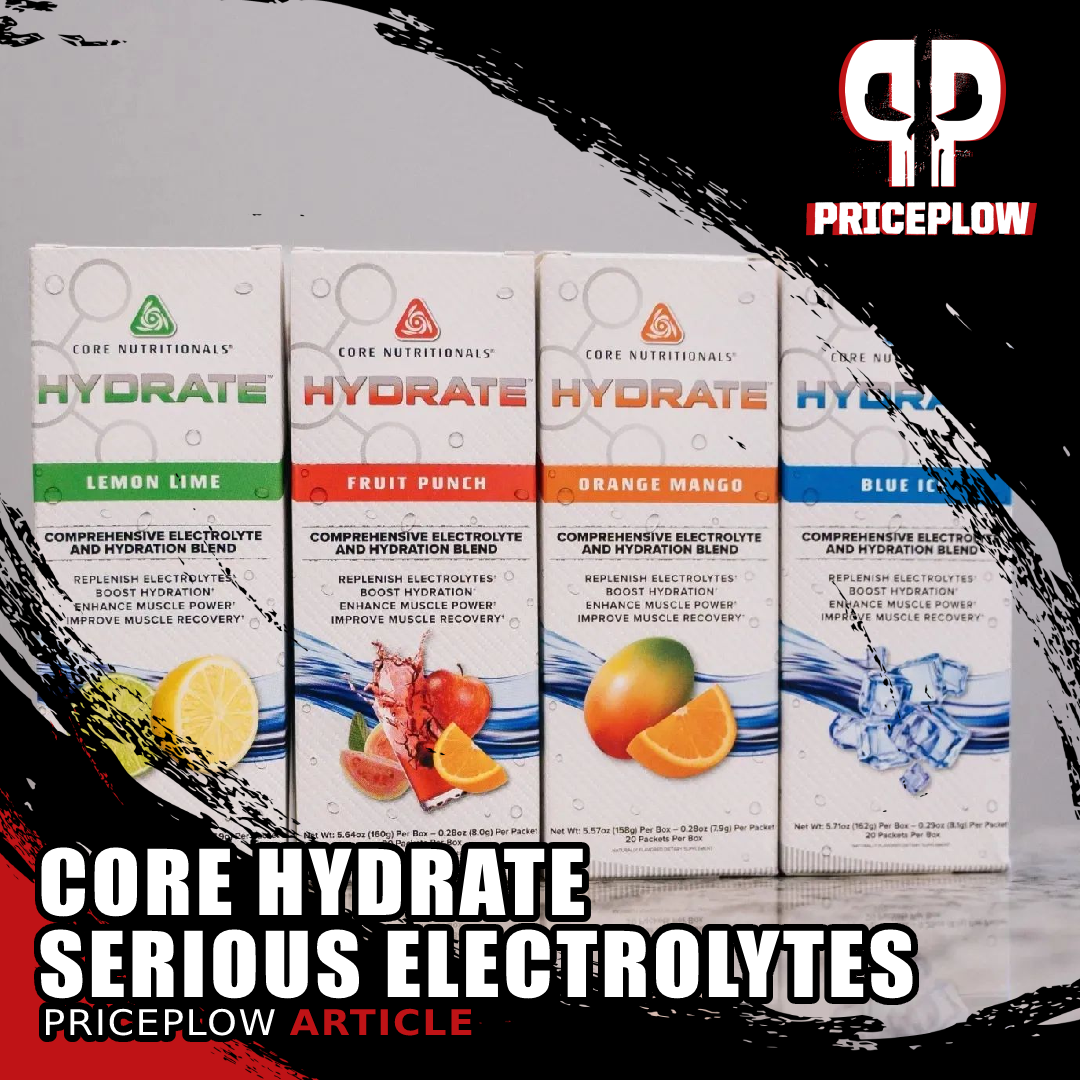
CORE Hydrate is here, and it's a serious electrolyte supplement, with massive doses of potassium, sodium, and chloride... and so much more in one little stick pack! Inside, we call this "The Doug Miller of Electrolytes" because it goes way above and beyond what's normal
Frustrated by low-dosed, poorly-ratioed, or incompletely-developed hydration supplements, the team's at it again with yet another impressive formulation:
Core HYDRATE: A Hydration Supplement for Serious Individuals
The new Core HYDRATE formula is a serious electrolyte-based hydration supplement that hits a ton of notes we look for in a top-tier formula. It's heavy on minerals, has a big emphasis on oft-neglected potassium, introduces a few novel forms of electrolytes, and includes several additional active ingredients like taurine and Senactiv.
The Doug Miller of Hydration Supplements
For extreme athletes -- or outdoor workers who deal with a lot of heat -- this is how you re-hydrate. One look at the formula and many of our readers will realize that this is what they've been searching for. As for the rest of you, we have a very in-depth explanation of why it's all so important, especially in our modern dietary environment.
Ladies and gentlemen, prepare to meet the Doug Miller of hydration supplements. Because when everyone else is doing 10 reps, Doug is doing 20... and this formula brings that exact same attitude.
Core Nutritionals Hydrate – Deals and Price Drop Alerts
Get Price Alerts
No spam, no scams.
Disclosure: PricePlow relies on pricing from stores with which we have a business relationship. We work hard to keep pricing current, but you may find a better offer.
Posts are sponsored in part by the retailers and/or brands listed on this page.
This area is reserved for Team PricePlow's upcoming videos.
Subscribe to our channel and sign up for notifications so you catch it when it goes live!
Core Hydrate Ingredients
In a single 1-stick serving (7.9 grams) of Core Nutritionals Hydrate, you get a ton. We're going to start with the essential minerals, which are listed in the upper half of the label. Of note are the huge doses of sodium and potassium provided here, far exceeding the vast majority (if not all) of electrolyte supplements on the market:
-
Calcium - 100 mg (8% DV)
We're not generally too concerned about calcium intake in our readership, especially for those who eat dairy and drink one of the many popular CORE Nutritionals protein powders, so we'll keep this part brief. CORE used a trifecta blend to yield 100 milligrams of the mineral:
- Calcium carbonate
- Calcium citrate
- Dicalcium malate (DimaCal)
Let's lean on the 2005 summary article titled "Calcium requirements for the athlete" to guide the way.[1] There, they explain that calcium is most often discussed in terms of bone health, setting dietary limits to avoid and prevent osteoporosis. This makes sense, since calcium is crucial to bone formation, resorption, and remodeling.
More than just bone health
But in the body, calcium goes much further. It's crucial for the following purposes:[1]
- Heartbeat regulation
- Nerve impulse conduction
- Blood pressure regulation
- Water balance regulation
- Cell division
- Immune function
- Energy and fat metabolism
- Nutrient transport across cells
As you can imagine, these effects -- in addition to improved bone health -- are all paramount to our athletic goals. The authors of the paper emphasize that dietary calcium is important, especially for female athletes, and that calcium losses through sweat should not be understated.[1]
Longer-lasting calcium from dicalcium malate
An interesting addition we haven't covered yet on the PricePlow Blog is DimaCal dicalcium malate, which has two calcium atoms bound to malic acid. This form of calcium was shown to have a significantly longer half-life in the body than three other forms tested.[2] Additionally, it's 29% calcium by weight, greater than some other forms (calcium citrate, for instance, is 19% calcium).
For all of the above reasons - as well as the pleasant (yet not overwhelming) bit of carbonation added by the calcium carbonate - CORE has a solid 100 milligram yield inside its Hydrate supplement. Those who don't eat dairy will want to check to see if they need more, however.
-
Magnesium – 139 mg (33% DV)
Here we have multiple sources of magnesium:
- Magnesium carbonate
- Magnesium citrate
- Magnesium bisglycinate chelate (TRAACS)
- Magnesium glycinate glutamine chelate (TRAACS)
Again, the magnesium carbonate supports calcium carbonate (discussed above) adds a bit of fizz to the drink.
In particular, we love to see chelated minerals because they're extremely bioavailable - CORE is using both magnesium bisglycinate chelate (TRAACS) as well as magnesium glycinate glutamine chelate (TRAACS). Glycine is a great use for chelations, since it absorbs so well in the small intestine, and is a beneficial amino acid in its own right.
Magnesium is an electrolyte mineral that we used to get a lot more of. Unfortunately, the magnesium content in common foods and beverages has declined sharply in the past century,[3-8] putting more of the population at risk for magnesium deficiency.
Magnesium is an important cofactor involved in over 300 different enzymatic reactions that affect things as important and diverse as glycemic control, cellular energy production, arterial function, and more.[9] Magnesium deficiency is tough to diagnose, but manifests as fatigue, insulin resistance, and impaired cardiovascular function.[3,10]
This is a strong, but not too strong dose. Overdoing it on magnesium can cause GI distress, but undergoing it can lead to a lot of the issues below. If you're still concerned about magnesium due to lack of it in your diet, consider a bit more before bed.
-
Zinc (as zinc bisglycinate chelate (TRAACS)) - 3 mg (27% DV)
Zinc is important for immune function, cellular energy production, DNA synthesis, protein synthesis, and cell division.[11]
It's also a powerful antioxidant that can protect your eyes from damage.[11]
If you need more zinc (great for immunity), you can add CORE Nutritionals Zinc, which has a large 50mg dose from zinc bisglycinate chelate - no more supplemental zinc above these needed!
But perhaps most importantly for anyone seeking to increase and sustain their gym performance, zinc is a master mineral of the male endocrine system and absolutely crucial for optimal testosterone production.[12]
Here again we have the TRAACS glycinated form, which is great since glycinated zinc wins, hands down, in the bioavailability competition against other forms of zinc.[13]
In general, we're happy to see this here, but if we still suggest getting more zinc in through diet and supplementation to confer the immune system benefits we see in research.
-
Chloride - 557 mg (24% DV)
Chloride is combined with other electrolytes like sodium and potassium to form mineral salts that can be digested and assimilated by the human body.
Generally speaking, the alkali electrolyte minerals that chloride gets bound to are what we're most interested in when we write about these salts or look at what electrolyte supplements to buy. But believe it or not, chloride has some serious importance and benefits of its own.
In fact, there's a study questioning this, titled "Chloride: the queen of electrolytes?", which goes on to compare chloride to the all-powerful queen in the game of chess.[14] Here's why:
Chloride is need for stomach acid production
We all know about the importance of stomach acid for healthy digestion – the strong acidity of this substance helps hydrolyze the food we eat and break it down, which is necessary if we're going to absorb any of the nutrients contained in that food.
But few of us have thought about the implications of stomach acid's chemical composition, which includes large amounts of hydrochloric acid (HCl).[14] Hydrochloric acid needs chloride to form – so your body can't produce stomach acid of sufficient acidity if your chloride intake is too low.
This can impair the digestion of protein, which is obviously a huge problem, as well as the absorption of essential micronutrients.[14]
No, not that kind of queen, Doug -- this study alludes to chloride as the almighty queen in the game of chess![14]
Malnutrition is actually not the only concern with having stomach acid that's too basic due to lack of chloride – you also need our stomach acid to be highly acidic so that it can kill foodborne pathogens and prevent bacterial or fungal overgrowth in certain parts of your digestive tract.[14]
Chloride ions are also involved in pulling water into your digestive tract through osmosis. If you don't have enough osmotic pressure due to insufficient chloride intake, you may be at risk of gastrointestinal dehydration and impaired digestive function.[14]
It’s possible to become deficient in chloride
You might think it's pretty much impossible to develop a chloride deficiency, given its ubiquity in the electrolyte mineral salts. Ordinary table salt, for example, contains a lot of chloride, as the chemical formula for table salt is NaCl (sodium chloride).
Metabolic alkalosis can be induced by an alkaline diet (above) or by dietary chloride deficiency (below). This sketch also includes the corrective response to that.[15] Don't skip your salt, folks.
However, this is not the case. A chloride deficiency is very possible, although unlikely for our salt-loving readers.
One illuminating and unfortunate example of this came in the late 70s and early 80s, when medical researchers became suddenly aware of a widespread failure to thrive phenomenon that was occurring in formula-fed infants. When they got to the bottom of it, they discovered that the new formula products on the market were seriously low in chloride, which caused them to develop a condition called metabolic alkalosis.[15]
You've probably heard of metabolic acidosis as a problem that can occur in type 2 diabetics – well, metabolic alkalosis is the opposite of that. Chloride is, again, a strongly acidic ion, so if you don't get enough, it naturally pushes your body into an excessively alkaline state.
It's no less serious a problem, either – if it gets bad enough, symptoms can include confusion, stupor, tremors, lightheadedness, muscle twitching, nausea, vomiting, numbness and tingling, or even stupor and coma.[16]
A surprising culprit: whole-food, low-salt diets
The most common way people try to "eat healthy" is to adopt a whole-food diet, but with minimal added salt.
There's a problem with that, though: whereas our modern ultra-processed convenience foods contain enormous amounts of salt, healthy whole foods can actually contain too little for some people.
It's not uncommon for a whole foods dieter to plug their daily diet into a nutritional calculator and see that their sodium intake is barely over 1,000 mg daily – which may be enough for a sedentary person, but is not enough to support any kind of challenging exercise regimen.
Since sodium chloride is the form in which both sodium and chloride occur naturally in whole foods, if your sodium intake is low, you can get your chloride intake is low as well.
As we'll discuss in great depth in the next two sections, we don't fear the salt - and with that, we get enough chloride alongside as well. But if eating low-sodium, unprocessed whole foods without added salt, your lack of chloride may really be harming your health and performance.
Just something to think about.
-
Sodium - 350 mg (15% DV)
The sodium dose in CORE Hydrate is where things get really serious, and potassium (discussed next) is even more so. At 15% the recommended daily value, a single serving of Hydrate brings more sodium than nearly all of its competition. CORE is a serious company run by serious athletes and a serious CEO (at least when it comes to athletics and nutrition) - none of that 3-4% nonsense here.
The sodium comes from three forms:
- Sodium Chloride
- Sodium Citrate
- Sodium Bicarbonate
This is a fairly big dose of salt for an electrolyte supplement – 350 mg is three or four times what we typically see in these products.
In our opinion, this is a great thing. The electrolyte supplement market needs to start using way more salt in general, because doses like this are what actually move the needle – 70 mg or 100 mg just isn't going to cut it.
But since salt gets such a bad rap, it's worth saying a word or two about why we want to see more salt.
We lose salt in sweat
We've probably all heard about a million times that eating lots of sodium is associated with high blood pressure and cardiac strain from excessive vasoconstriction.
The first thing to say about it is that a 350 mg dose is great for an electrolyte supplement, but is almost certainly not going to put you in the category of excessive sodium intake on its own. Always consider the context of your entire diet – add up the sodium you're getting from food and other supplements as well.
The other thing to note is that CORE Hydrate contains not just sodium, but the other electrolyte minerals as well – we also have magnesium and calcium, but especially potassium, which is dosed higher than sodium and will help balance out the effects of extra sodium intake.
The main reason not to worry about it speaks directly to the purpose of a hydration supplement – hydration supplements are intended to be taken in support of intense physical activity, like working out, doing manual labor, or really anything that causes you to sweat.
We lose a lot of sodium in sweat, so for some people, there's actually a risk you can end up sodium deficient to some degree.
That's counterproductive for anyone doing hard physical work, since sodium is required for muscular contractions,[17] and muscles that don't have enough sodium can function below their full capacity.[18]
If you want to learn more about the importance of adequate sodium intake for physically active people, check out one of our favorite references on the subject: a journal article entitled The Importance of Salt in the Athlete's Diet.[18]
But don’t sweat the salt
So people who sweat a lot need more salt – but even if you don't find yourself in that category, your sodium intake might not be as much of an issue as you think it is.
After decades of recommending that Americans consume no more than 2,300 milligrams of sodium daily, physicians are beginning to consider new evidence that suggests we may actually need more sodium than previously thought.
Ironically, the effects of getting too little sodium end up resembling those of getting too much. In his journal article High salt intake: detrimental not only for blood pressure, but also for bone health? Thomas Remer points out that:
"...current evidence from prospective cohort studies suggests a J-shaped association between sodium intake and cardiovascular events, based on studies from >300 000 people, and suggests that the lowest risk of cardiovascular events and death occurs in populations consuming an average sodium intake range (3-5 g/d). The increased risk of cardiovascular events associated with higher sodium intake (>5 g/d) is most prominent in those with hypertension."[19]
Most readers will probably be surprised to learn that harm from sodium may not even begin until you reach an intake of 5 grams per day! Even the low end of the "safe" range, 3 grams of sodium, is more than the maximum allowed sodium intake according to the official nutrition guidelines.
Read that again: consuming a low sodium diet might increase your risk of "cardiovascular events!"
A huge study published in 2011 by the Journal of American Medicine, conducted with over 28,000 participants, found that urinary sodium excretion below 3,000 milligrams per day – urinary sodium excretion being a proxy measure for sodium intake – actually increased the risk of hospitalization for congestive heart failure.[20]
Americans did listen to the food guidelines.. and we got sicker and fatter than ever. Are we sure red meat, saturated fat, salt, and cholesterol are really the issue?! It's time to stop fearing salt and ancestral foods.
This study actually found that uptakes of up to 7,000 milligrams do not, on average, raise a person's risk of cardiovascular disease.[21]
Another study from 2011, a meta-analysis, compiled data from seven different studies and found that restricting salt intake increased all-cause mortality among patients with heart disease.[22]
Of course, everything is individual. None of what we're saying is medical advice, and you should talk to your doctor about what sodium intake is right for you. After all, some people will do better on a high sodium intake, while others do worse. It just depends.
Plenty of experts see the individual variation in sodium response. As early as 1987, physicians had observed that for any given person, a high-sodium diet was about as likely to lower their blood pressure as raise it – and most people saw no change in blood pressure at all.[23]
Of course, the anti-salt stuff isn't completely baseless – some studies find that patients randomized to sodium-restricted diets have a 25% lower risk of heart attack or stroke than patients who get a sham intervention.[24]
It really all just depends. Welcome to nutritional science, where the seemingly simplest things turn out to be endlessly complicated.
-
Potassium - 530 mg (11% DV)
In this section, we discuss how potassium is necessary for the vasodilation action of supplements like Core FURY and Core PUMP. Can HYDRATE here help with your pumps too? We think so, if you're low on potassium or sodium!
Even more impressive than the sodium dose is the potassium dose! A massive 530 milligram dose yields 11% of the recommended daily value, basically unheard of in this industry! Anyone can flavor salt, but only Doug Miller and team can properly flavor this much potassium alongside so many other minerals and ingredients.
CORE's providing it in the following four ingredients:
- Potassium citrate
- Coconut water concentrate
- Potassium chloride
- Potassium glycinate chelate (TRAACS)
Potassium (K): A shortfall nutrient
We often note how potassium has become a "shortfall nutrient",[25] simply due to Western dieters not getting enough in their diets. One pair of researchers even flat out state in their paper's introduction:
"Until recently, humans consumed a diet high in potassium. However, with the increasing consumption of processed food, which has potassium removed, combined with a reduction in the consumption of fruits and vegetables, there has been a large decrease in potassium intake..."[26]
Another study also bluntly states:
"Adult Americans consume too much sodium and not enough potassium."[27]
We also always love to point out the study titled "Food pattern modeling shows that the 2010 Dietary Guidelines for sodium and potassium cannot be met simultaneously", which show that when using the US government's recommended diets, it's impossible to get their recommendations of both high potassium and low sodium that they wish.[28]
Long story short, we used to get way more potassium than sodium, but that's sadly no longer the case.[25,29] Unless you're getting plenty of fruits and vegetables like potatoes, carrots, beans, tomatoes, prunes, and/or bananas, you may be low as well.[30]
CORE Nutritionals works to help you fix that here.
In the above section, we already dug into the fraudulence of low sodium suggestions, so we'll leave it at that and just state that we think both should be high for athletes - and CORE Hydrate helps make that happen.
The benefits of potassium
It's all about the potassium sodium BALANCE. Too many supplements are too heavy on sodium without adding potassium.
Generally, potassium is studied with respect to its cardiovascular health benefits.[25] Like many things in health, ratios are just as important as amounts -- a consistent amount of research shows that higher potassium:sodium ratios lead to lower blood pressure and reduced heart disease risk -- more so than merely lowering sodium alone![30,31] (And if you can't tell from our writing, we do not encourage sodium restriction for most athletes reading this).
To our dismay, there's not really much research connecting potassium with performance - this is something we hope the scientific community can begin to provide. However, connections to performance are there thanks to the aforementioned cardiovascular improvements as well improved bone mineral density thanks to better calcium retention when taking potassium.[32,33]
Focus on sodium:potassium ratios
At this point, there's simply too much research to ignore - there's a sodium-potassium interaction that's heavily involved in the pathogenesis of hypertension,[34] and several studies demonstrate that hypertension and cardiovascular disease are associated with high sodium:potassium ratios.[35-39] Many fail to fix this, focusing too much on sodium down (nearly impossible to do)[27,28] instead of potassium up!
Vasodilation from potassium?!
Now here's something excellent that most don't talk about. You know all those pump ingredients we see in pre-workout supplements like Core FURY and Core PUMP? Well, mechanically, it's the sodium-potassium interaction that enables more vasodilation through hyperpolarized endothelial cells![34,40,41]
Without potassium, you get a very negatively affected state of health, as shown in the image below:[34]
A flow chart of how the modern western diet negatively affects sodium/potassium interaction, leading to poor health consequences.[34]
Incredibly simplified, enough potassium allows intracellular calcium levels to appropriately drop, allowing vasodilation to occur. This is what leads to blood pressure improvements (and often better pumps in the gym).
So when it comes to an electrolyte supplement, it's not just about sodium. Potassium drives a lot of what we're interested in, and we have more potassium (530 milligrams) than sodium (350 milligrams) here. Hell yeah.
-
Vitamin C (as ascorbic acid) -- 250 mg (278% DV)
Vitamin C is one of the most commonly supplemented antioxidants, and for good reason. It's famous for its ability to fight oxidative stress and inflammation while boosting immunity.
But what does it have to do with hydration?
The answer depends partly on what your hydration-related goals are. Most readers here on the PricePlow Blog are probably looking for a hydration performance boost, whether that be athletic or cognitive performance. For this kind of hydration, the ingredients to focus on are electrolyte minerals, which is why there are so many of them in Core Hydrate.
But if you're interested in maximizing health and wellness – or aesthetics – then you'll want a supplement that promotes full-body hydration, optimal hydration of every tissue possible.
And for skin hydration, vitamin C is an absolutely essential ingredient.
A 2015 study from Brazil found that middle-aged men who took a vitamin-C-containing supplement had significantly better skin health by the end of the 180 day study period. In particular, facial skin hydration was significantly better after six months compared to the beginning of the study.[43]
This is partly because vitamin C directly increases your skin's capacity for hydration,[44] but is also related to its ability to fight oxidative stress and inflammation within skin tissue,[45,46] which helps protect skin tissue structure.
And if your concern is primarily to have skin with a hydrated appearance, vitamin C is important for that too, because it's required for healthy collagen production.[47]
A 2018 meta-analysis of more than 10 different studies on vitamin C and collage found that vitamin C supplementation can increase your body's production of collagen type I,[48,49] which is crucial for having a youthful, glowing, well-hydrated appearance.
-
L-Taurine — 1,000 mg
Taurine is important for healthy hydration because it's an osmolyte, meaning that it helps promote cellular hydration.[50]
Osmolytes work by increasing osmotic pressure around your body's cells, which naturally forces a higher-than-usual amount of water into them. This is what we call hyperhydration, and it comes with a number of important benefits.
For one thing, cellular hyperhydration means your cells can work harder and longer, which can delay the onset of fatigue across your entire body.[51] This is why osmolytes are generally regarded as performance-boosting ingredients.
Taurine is no exception in this category – a big meta-analysis found that even a single dose of taurine can immediately and significantly improve endurance during a workout.[52] According to the research, a 1,000-milligram dose is enough to have this effect, so we're glad to see that dose in CORE Hydrate. As we'll comment numerous times in this article, Core Nutritionals crushed it with the dosing here.
Taurine is also a powerful antioxidant, can facilitate calcium signaling between muscle cells (which is necessary for optimal muscular contractions), and improves cognition.
Supplemental taurine is a good idea for anyone who's working hard, since taurine is considered conditionally essential,[50,52,53] meaning that your requirements are actually increased by episodes of upregulated metabolic function (like exercise, illness, or injury).
Finally, although it's not directly relevant to the purpose of a hydration formula, we would be remiss if we didn't mention the fact that taurine has some serious nootropic properties. In particular, it synergizes with stimulants like caffeine, which is why you often see it used in energy drinks and energy-boosting supplement formulas.
The nootropic effects of taurine can be attributed to its GABAergic function in the brain, where it helps decrease inflammation while promoting communication between synapses and supporting mitochondrial function within neurons.[53]
So, to sum it up, taurine can be great for physical and mental performance. Most people in the market for a hydration supplement will probably appreciate the benefits of taurine supplementation.
-
Coconut Water Concentrate (Cocos nucifera) – 500 mg
Coconut water is a great source of electrolyte minerals. You need some kind of electrolyte blend in any good hydration supplement because so many electrolytes are lost through sweat during exercise.
"Electrolyte replacement" is one of those concepts that people pay endless lip service to in the supplement industry, but we rarely hear a lucid or detailed explanation of why it's so important. So let's quote from an authoritative source on the importance of electrolytes:
Electrolytes are essential for basic life functioning, such as maintaining electrical neutrality in cells, generating and conducting action potentials in the nerves and muscles.[54]
Don't forget that your body is an electrical machine, and needs conductive materials to successfully transmit electrical impulses.
Very low levels of electrolytes can impair health and performance, possibly even to a life-threatening degree.[54] For instance, without electrolytes,your heart can stop beating, and you would die very quickly. It's pretty hard to reach that point, but still, low levels of electrolytes can cause problems like cardiac arrhythmia as the electrical potentials in your cardiac tissue begin to drop.[55]
That's why everybody is so focused on keeping electrolyte levels topped off.
Fortunately, it's pretty easy to replenish electrolytes! Products like Core Hydrate, with ingredients like coconut water concentrate that are naturally rich in the electrolytes your body craves following a workout, are a great way to do it.[56] In fact, some research shows that coconut water is equal to purpose-built hydration drinks when it comes to improving whole-body hydration.[57]
Note: Low-carb dieters need to take particular heed of the body's electrolyte requirements, as cutting carbs actually intensifies your body's need for water and electrolyte intake.[58]
-
ElevATP (Ancient Peat and Apple Extract) (fruit) -- 150 mg
ElevATP is designed to increase your body's production of adenosine triphosphate (ATP).[59] Having large ATP stores available is crucial for peak mental and physical performance because ATP is the form of energy that your cells actually use to perform all of their work, including the metabolic task of keeping you alive.
It's hard to say in few words just how fundamental and important ATP is for human health and function.
The mitochondrial electron transport chain (ETC), responsible for generating all of your body's energy (as ATP, seen near the middle). Image courtesy of Wikimedia
One of our favorite metaphors is that if your body were an engine, ATP would be the gas. We think of food and water as gas, but actually, the stuff you eat and drink is more like crude oil that your body refines into gas. The incredibly complicated metabolic machinery of the human body, with its insulin and phosphorylation and ketogenesis, exists for the purpose of turning food into ATP.
So if you have lots of ATP, that means your cells have a ton of fuel to consume while doing useful work. On the other hand, if you don't have enough, then your cells will slow down and so will your body.
Mild ATP deficiencies might make you feel lethargic and make it difficult to achieve your goals. When it comes to severe deficiencies, a 2019 review of ATP research, published by Frontiers in Pharmacology, found that metabolic defects leading to ATP insufficiency can cause serious, life-threatening illness.[60]
This isn't too surprising since if your cells run out of ATP, they starve. At the cellular level, there is no essential difference between your cells running out of ATP and you starving to death.
So if we give our cells extra energy in the form of supplemental ATP, does this mean they'll perform better than usual?
Research seems to indicate that, yes, this is the case.
For example, a 2016 study found that compared to a placebo group, subjects who took 150 milligrams of ElevATP for eight weeks were significantly stronger, as measured by progress on the barbell squat and deadlift.[61] Their vertical jump speed and power also improved.[61]
-
ConcenTrace AC (Trace Mineral Complex) -- 100 mg
ConcenTrace is a blend of trace minerals harvested from an ancient inland sea in Utah.
It's believed that the sea was the ultimate evolutionary origin of human beings, and so it's hardly surprising, if you believe this, that the sea would contain the full spectrum of minerals that the human body requires to function.
These minerals, taken together, are called trace minerals. The word "trace" denotes the fact that we require these minerals in seemingly minuscule amounts. But make no mistake: they are crucial for human health.
ConcenTrace contains more than 72 different trace minerals, which is a pretty big number. However, the science on these minerals is not yet settled. Some of them are now regarded by scientists as essential, while the nutritional importance of others remain largely unexplored.[62]
As much as we love getting into the nitty-gritty on the PricePlow blog, it's simply impossible to discuss all 72 trace minerals in ConcenTrace. Just know that as catalysts in metabolic enzymatic processes, many of them are indispensable for cellular energy production[62] (the importance of which we just covered in the ElevATP section above).
ConcenTrace is a good source of the electrolyte minerals we discussed in the coconut water section – calcium, sodium, magnesium, and potassium.
Additionally, it's also high in a few minerals that we want to highlight for a longer discussion.
-
Sulfate – 40 mg
Sulfate is a good source of sulfur, a nonmetallic element that's much more important for human health than is generally recognized. In fact, if you're familiar with the popular supplements, MSM, DMSO, and glucosamine sulfate, you may be interested to learn that the increase in blood sulfur levels following consumption of these substances is probably a big part of the reason why they work to improve health.[63]
Just to give one example of why we need sulfur— depletion of the mineral can maximize cardiovascular disease and stroke risk.[64]
-
Lithium – 1.5 mg
Although best known as a treatment for bipolar disorder, specifically when given in far higher doses, evidence is emerging that lithium may be an essential micronutrient.
Lithium has been found to have broadly diverse mechanisms of action, affecting many different enzymatic and hormonal systems throughout the body. In trace amounts, it's been implicated in circadian rhythm regulation, hypothalamic-pituitary axis function, vitamin transport in the brain, and immune function, among other things.[65]
Researchers have even found an inverse correlation between lithium levels in drinking water and the suicide rate in that particular area,[65] suggesting that it has a protective effect on mood and cognitive function.
Public water supplies contain less lithium than what we would get in the ancestral environment,[65] so lithium deficiency is something that may need to be addressed as a public health concern.
-
Boron – 1 mg
Although not yet extensively studied or fully understood, boron seems to resemble zinc in that it's a kind of tonic for the male endocrine system. It can boost both total and free testosterone levels – the difference being that free testosterone is testosterone that hasn't been bound to sex hormone binding globulin (SHBG), meaning that it's available for immediate use by your body's cells.[66,67]
Boron can also reduce estrogen levels,[67] which is a huge potential benefit for consumers with concerns about estrogen dominance, a common condition.
-
-
Senactiv (Panax notoginseng (root) and Rosa roxburghii Tratt (fruit) Extracts) – 50 mg
Many readers probably know NuLiv Science as world leaders on ginseng science and supplements.
Out with the old, in with the new. Regenerate senescent cells and improve performance with NuLiv Science's Senactiv
One of their coolest products, in our opinion, is Senactiv, a senolytic agent derived from ginseng and chestnut rose, a species of wild rose that's native to China.
In case you don't know what a senolytic agent is – which would be understandable, given how new this concept really is – they're nutraceutical compounds that help your body break down and recycle old, dead, or dying (senescent) cells.
Lots of studies have been done on the bioactive constituents of Senactiv,[68-73] showing the ability of these compounds to improve a variety of important biomarkers in human tissue.
In one, a randomized double-blind placebo-controlled study, participants who took one of Senactiv's ginseng-derived bioactive constituents had significantly less muscle damage, faster glycogen resynthesis, and reduced inflammation after a hard workout.[68] Their VO2max also increased by an incredible 20%.[68]
Check out our long-form article on Senactiv, Senactiv from NuLiv Science: Regenerate Senescent Cells and Perform Better.
Flavors Available
Below is a list of all flavors available:
Conclusion: CORE Hydrate Crushes It
Now that is what we call an athlete's electrolyte supplement. You simply don't often see doses of sodium and potassium that are this high, and when you do, they don't taste this good. We'll say it again, Doug Miller and his crew at CORE Nutritionals absolutely crushed it with this formulation.
Anyone can throw a ton of sodium and some taurine into a bucket. But to make it with this much potassium and keep the flavoring excellent is another story. This one took time and attention (we actually tasted it in our February 2022 trip to CORE's headquarters), and it shows in the results.
When it comes to hydration supplements, a new bar has been set. And unlike some of the competition, this one actually has calcium, zinc, chloride, and magnesium... yet doesn't rely on a bag of sugar to flavor and sweeten it. The hydration world has been put on watch.
Core Nutritionals Hydrate – Deals and Price Drop Alerts
Get Price Alerts
No spam, no scams.
Disclosure: PricePlow relies on pricing from stores with which we have a business relationship. We work hard to keep pricing current, but you may find a better offer.
Posts are sponsored in part by the retailers and/or brands listed on this page.
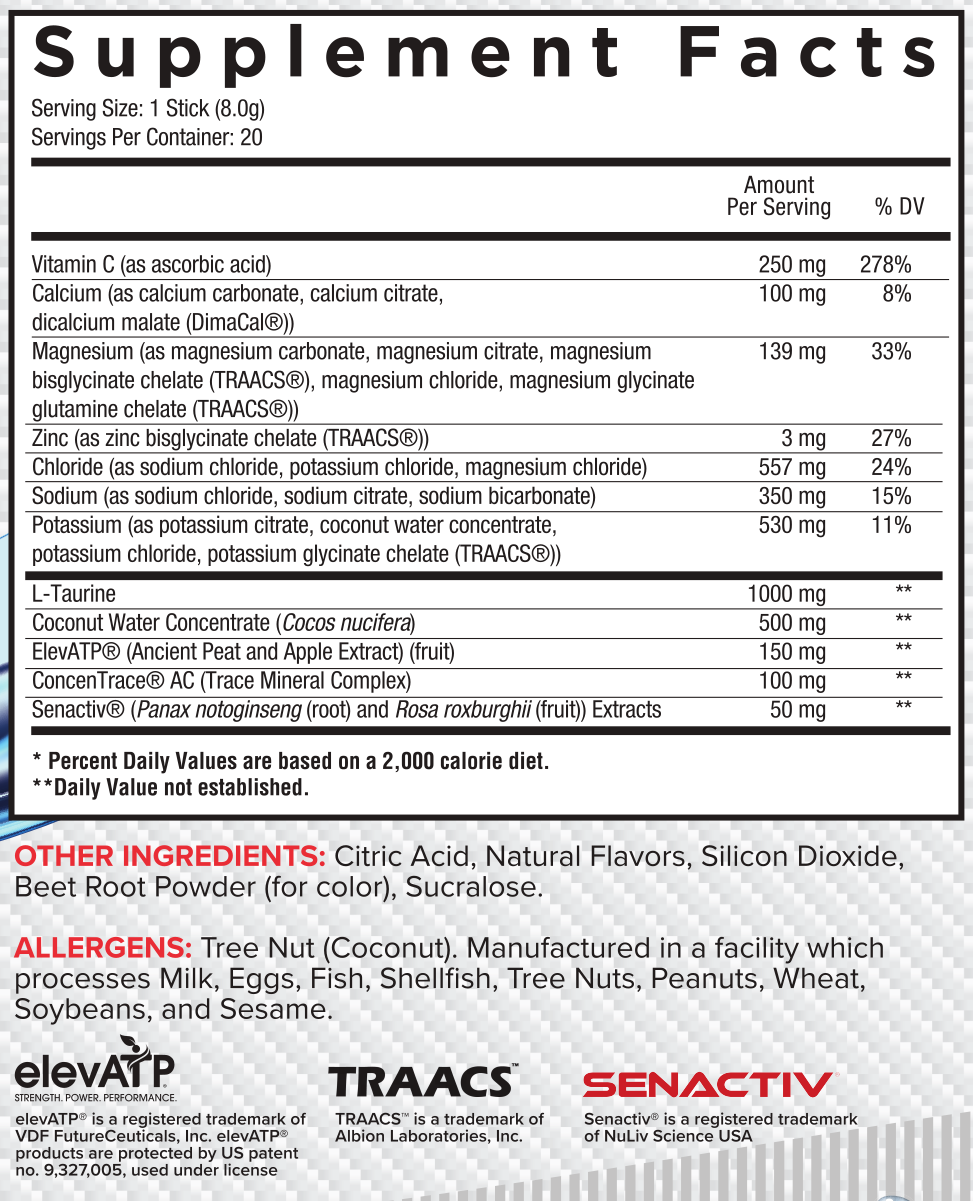
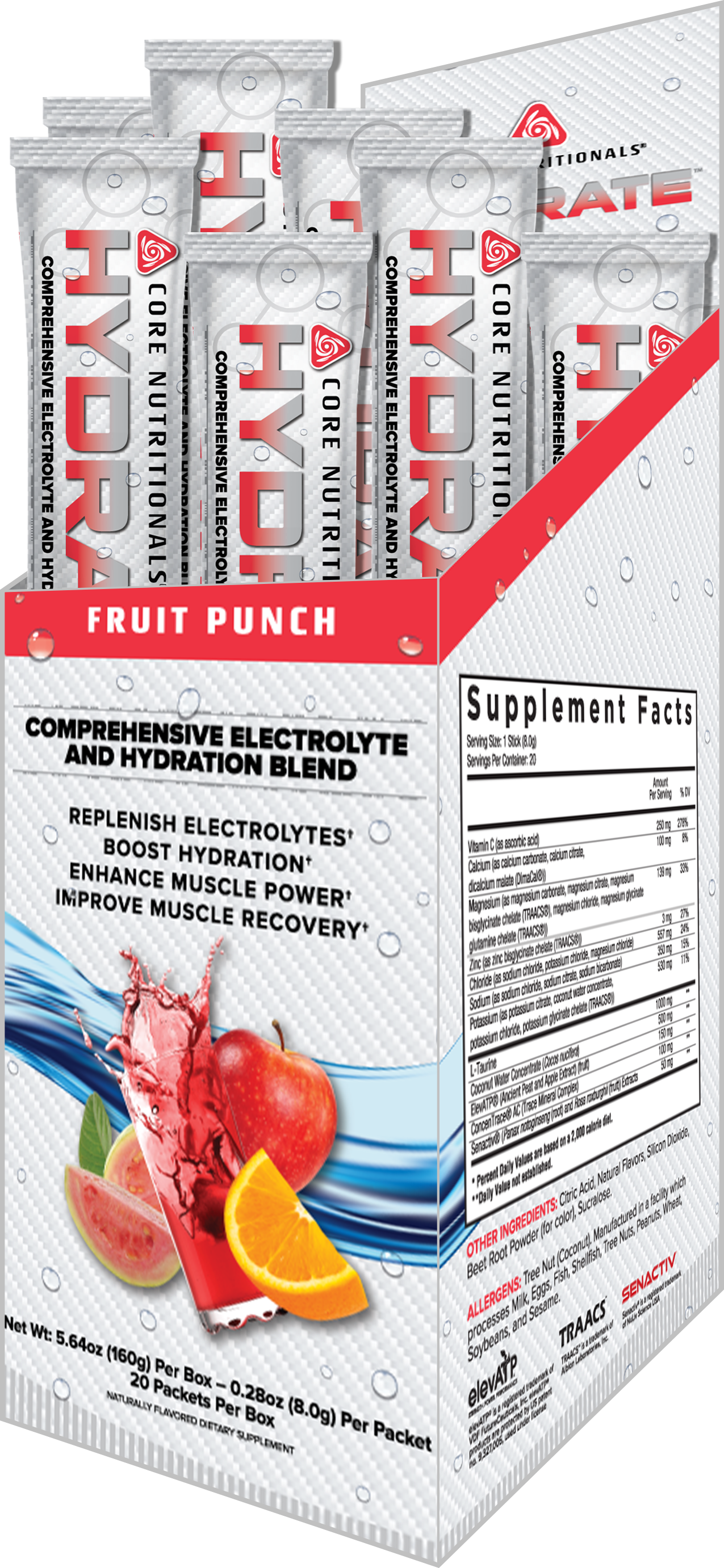
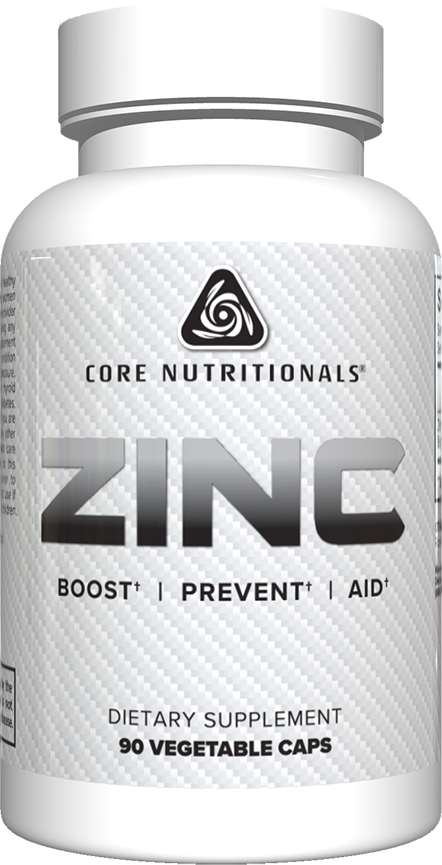
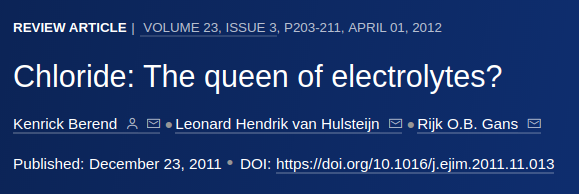
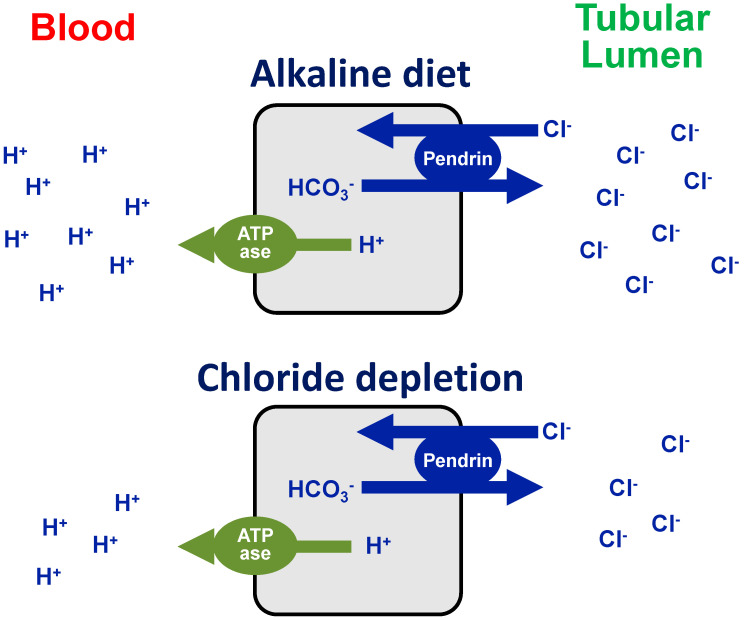

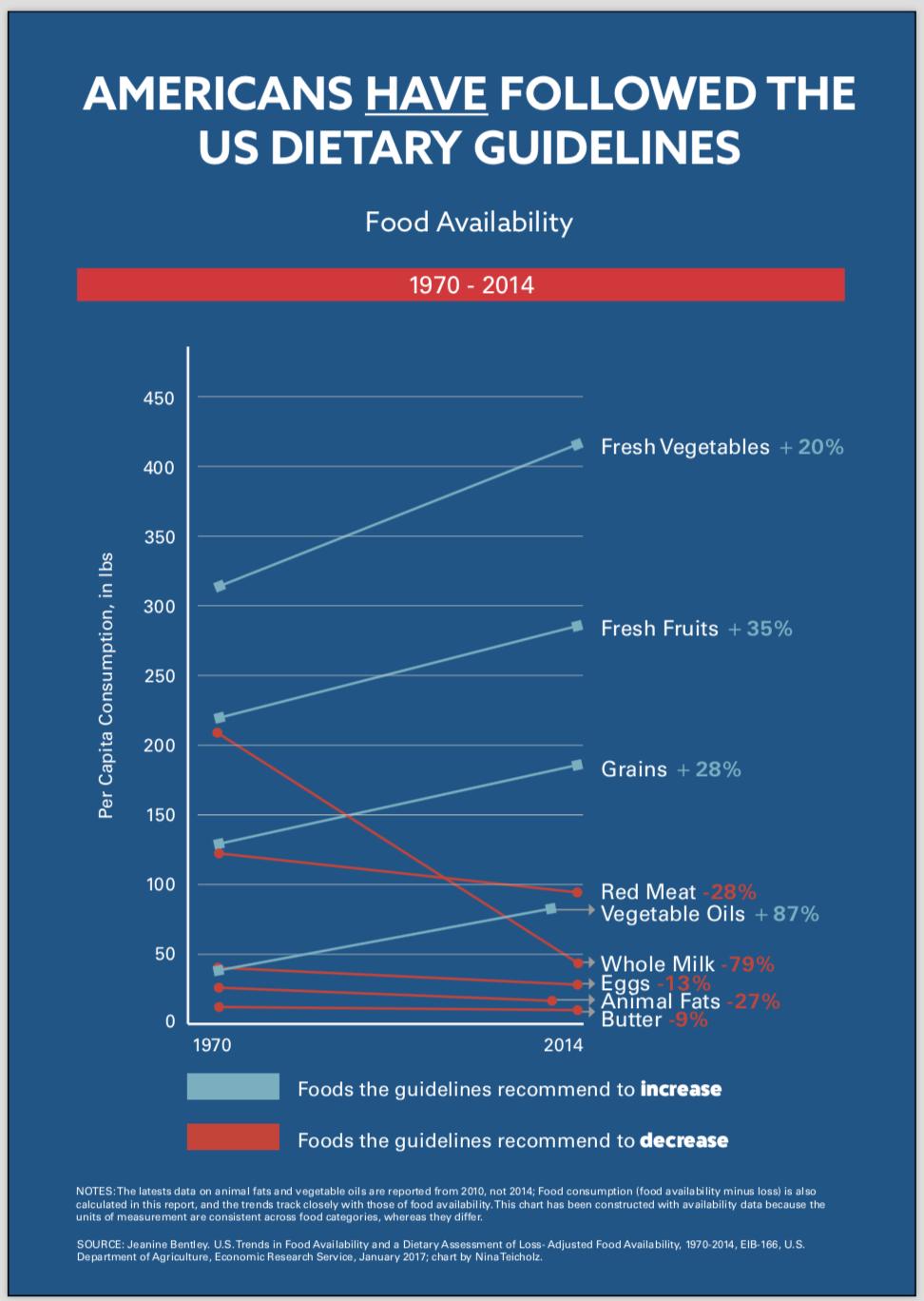
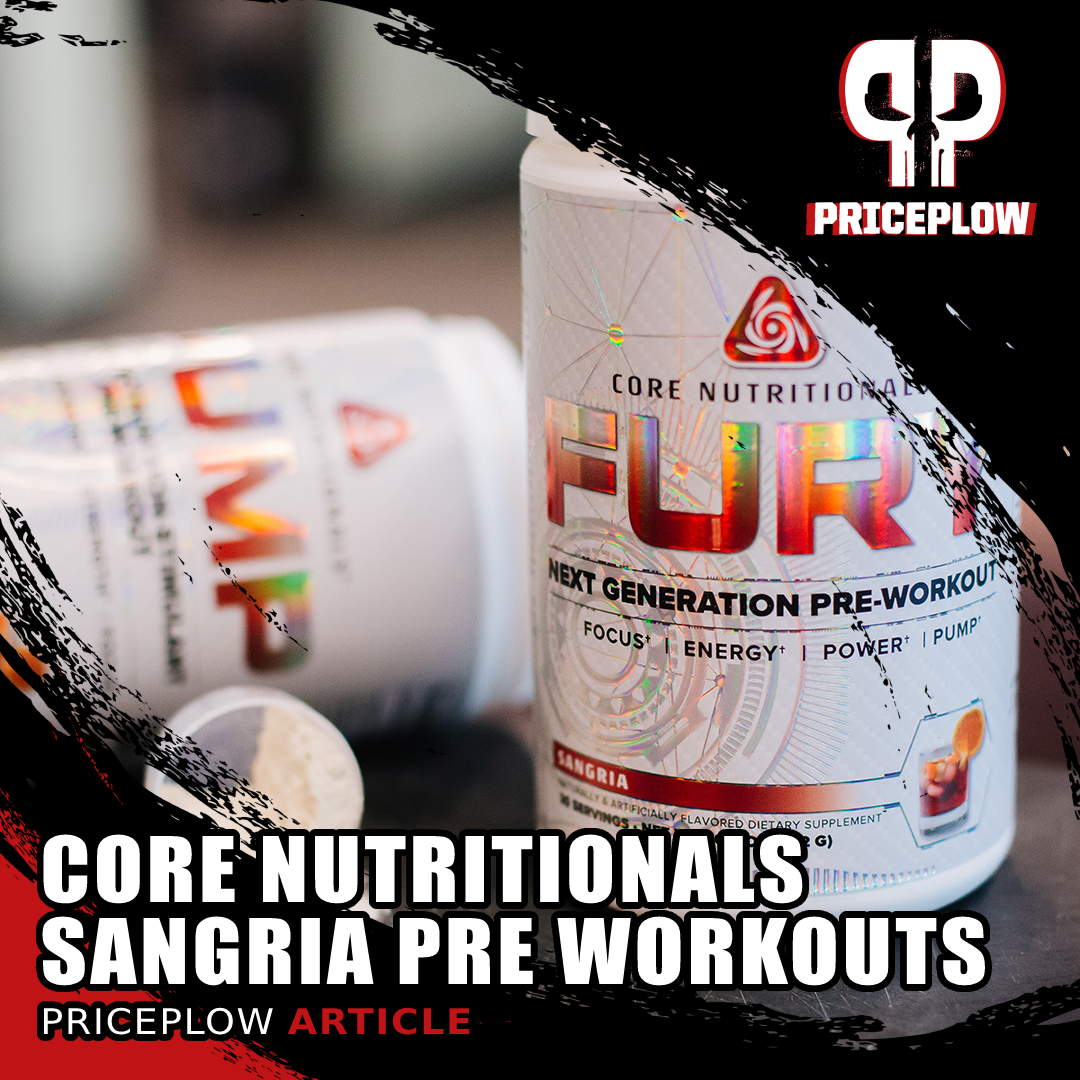
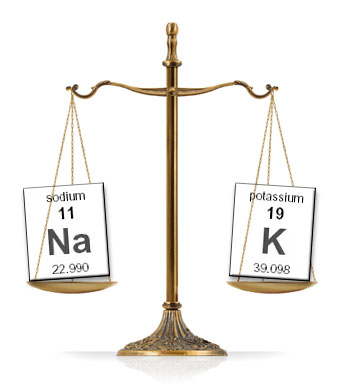
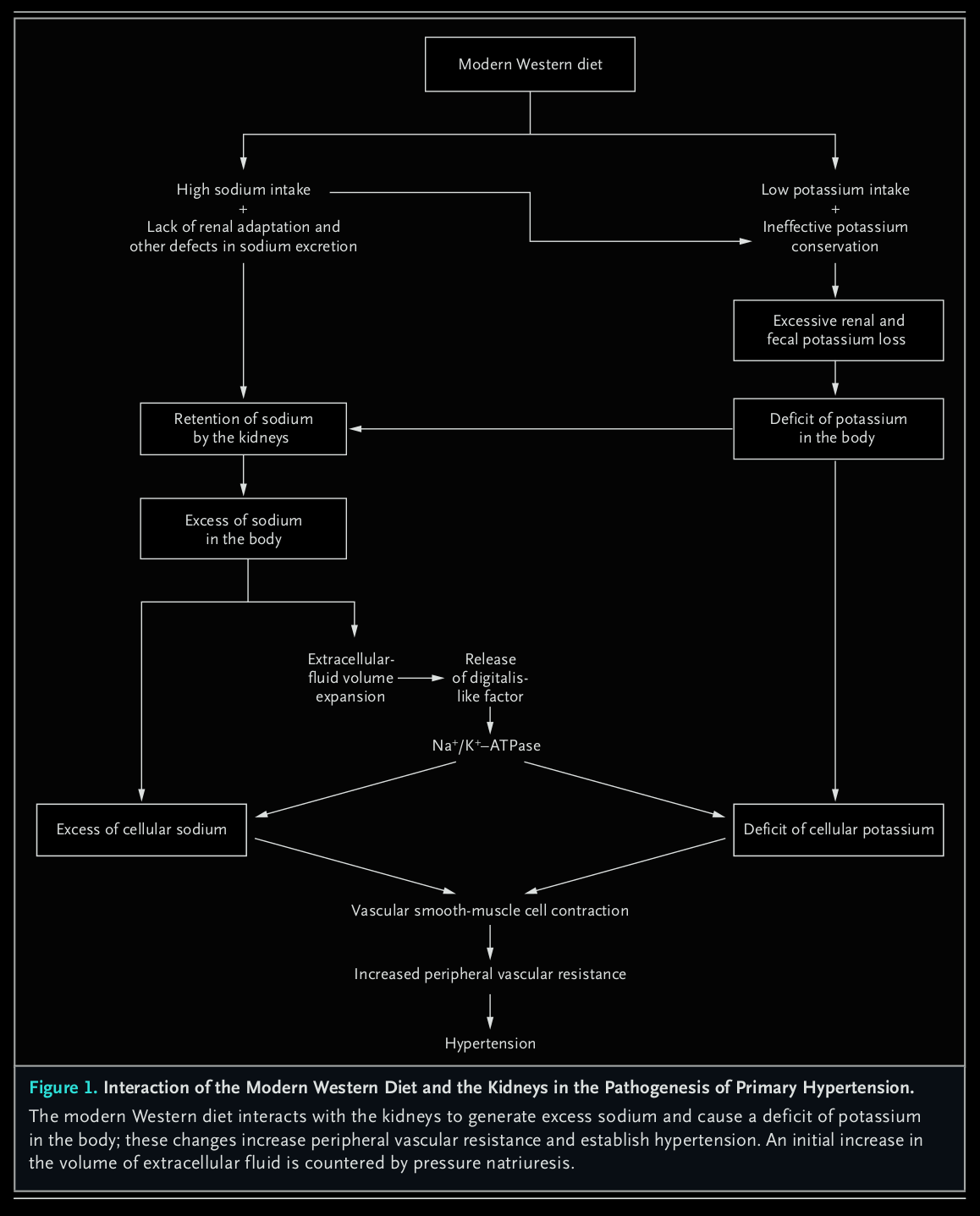
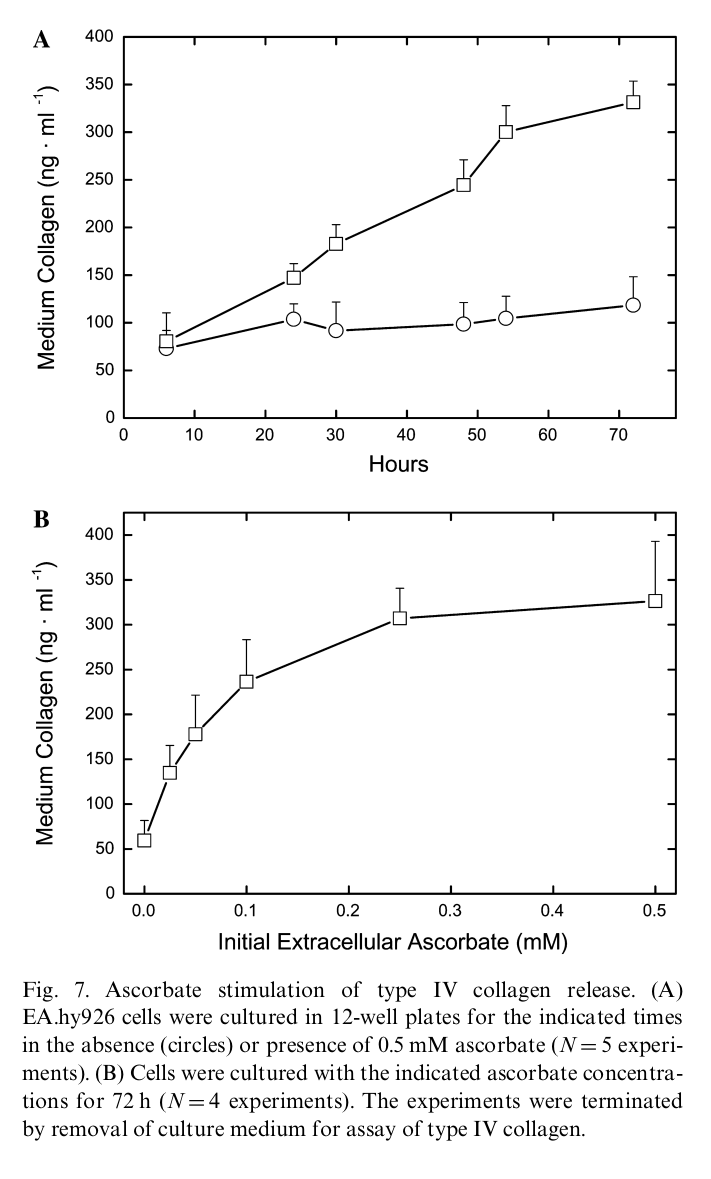
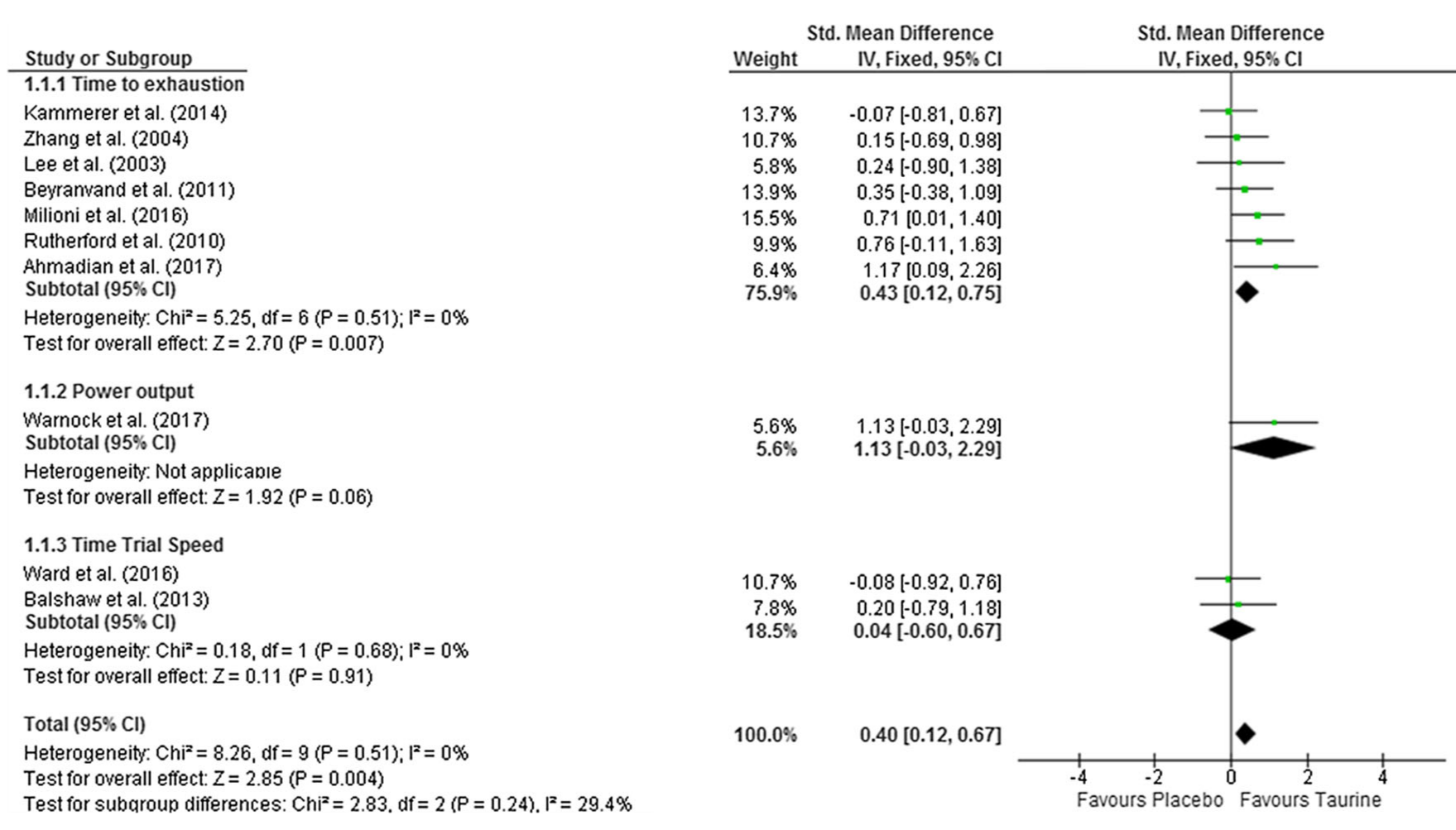
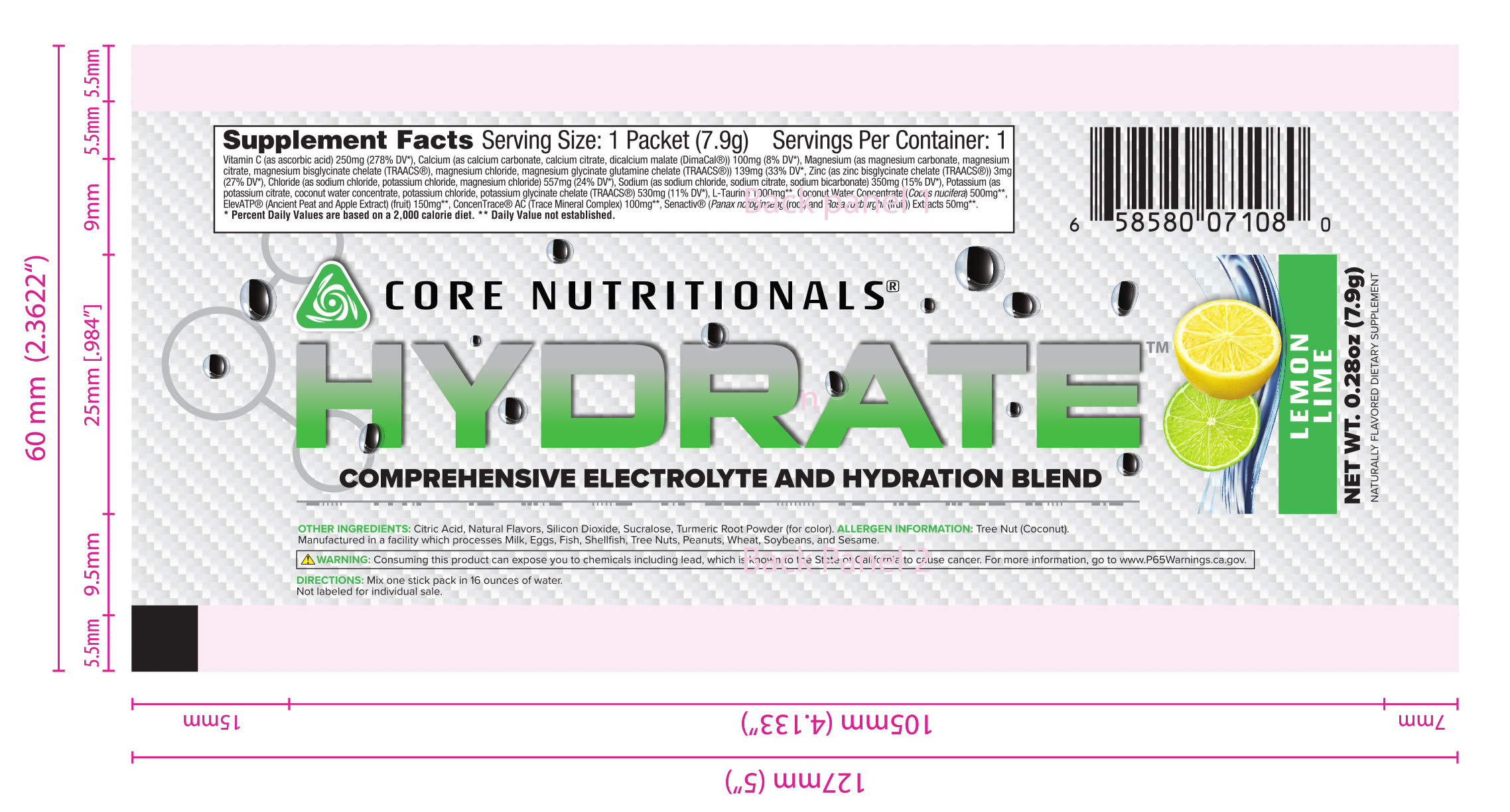
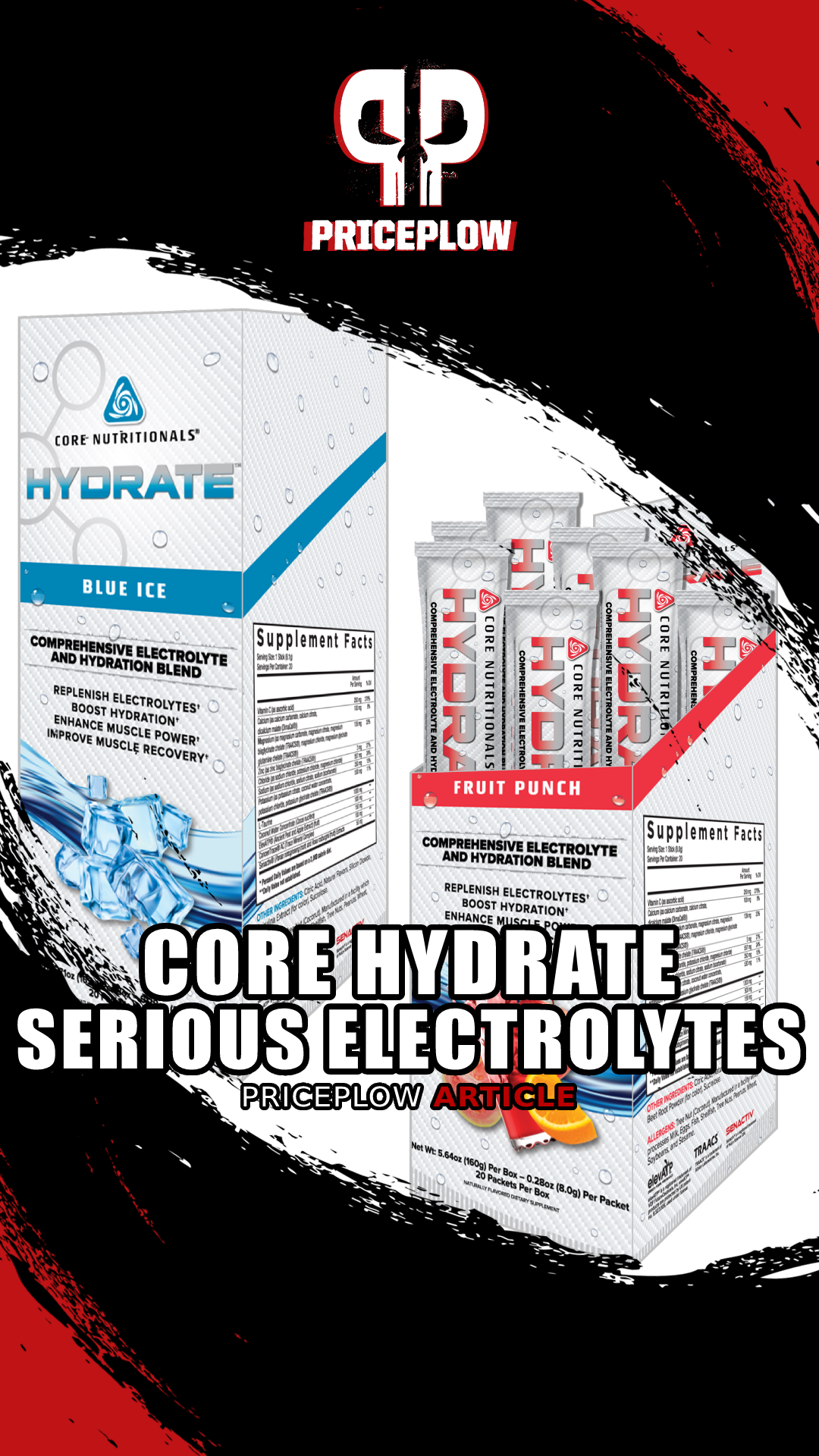
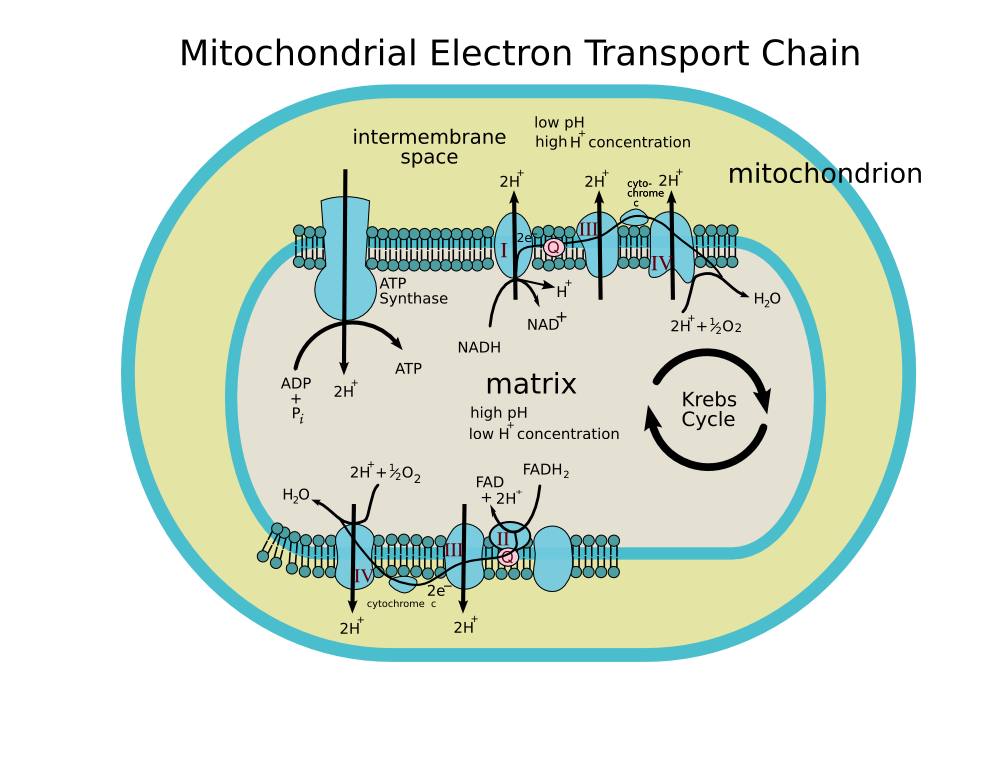
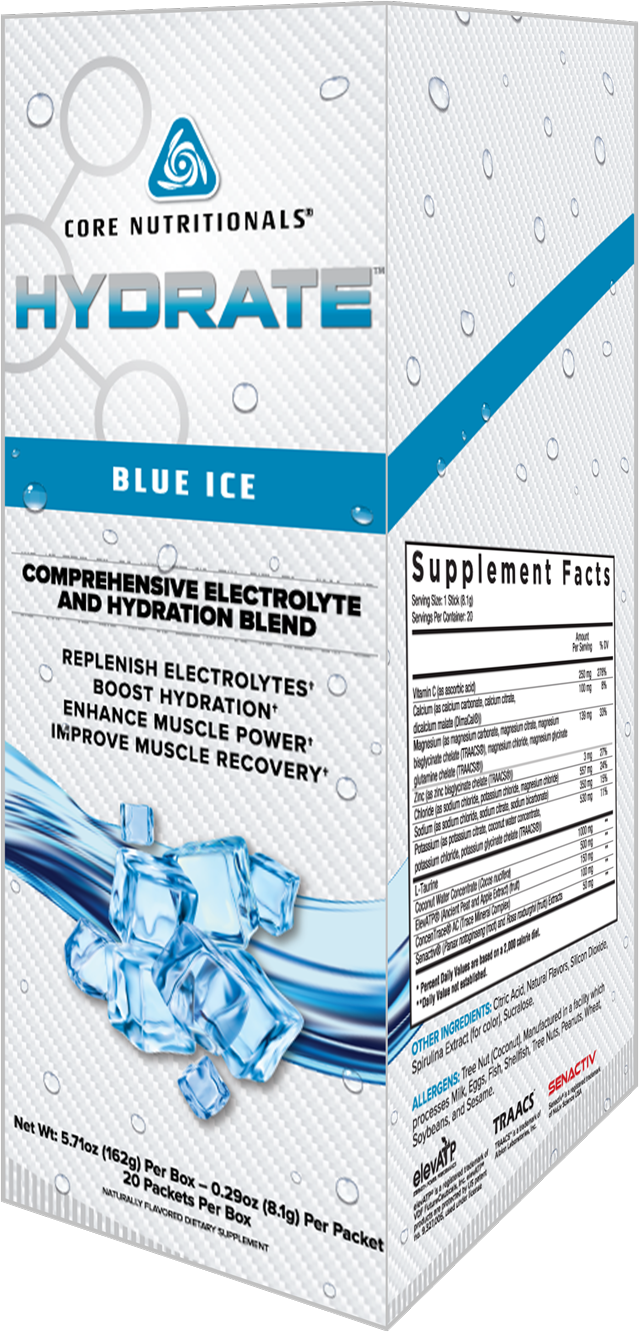
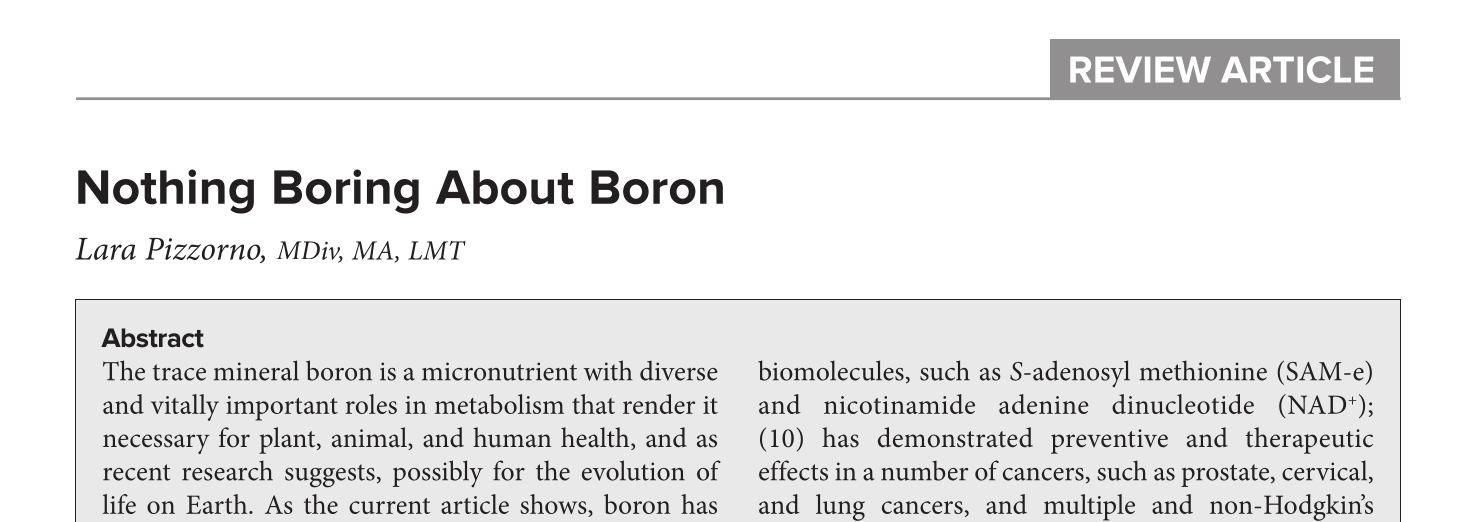
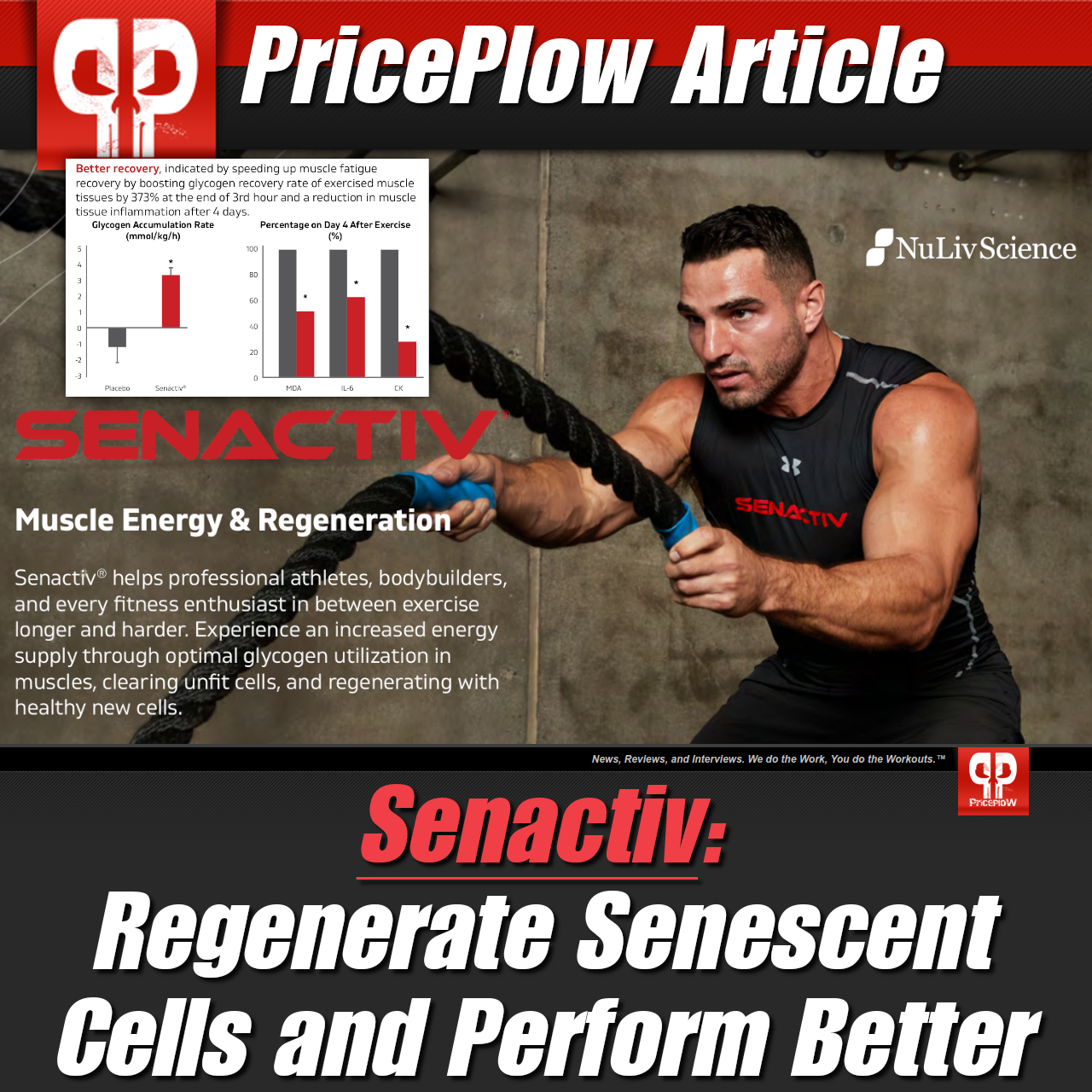
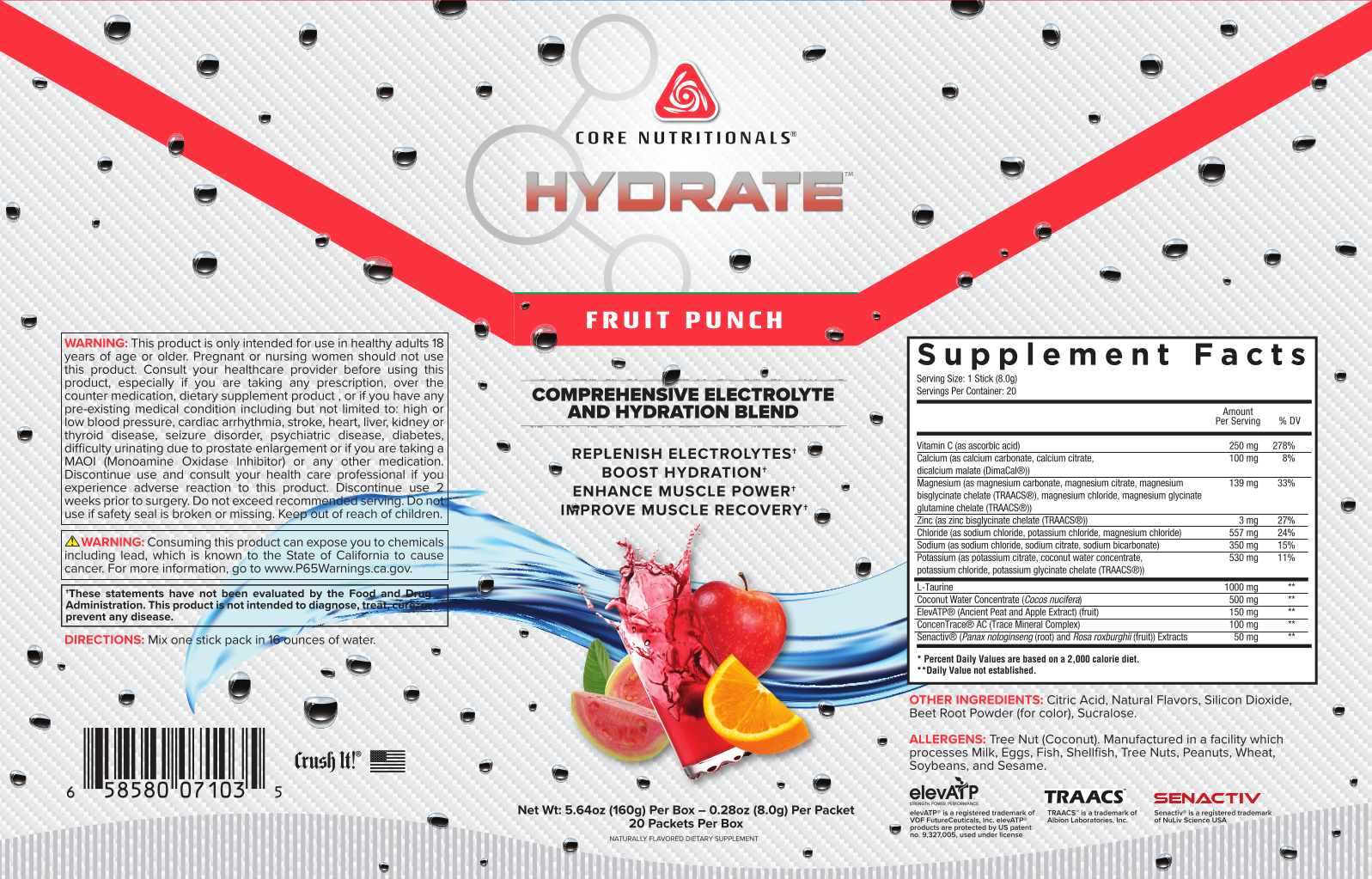


Comments and Discussion (Powered by the PricePlow Forum)